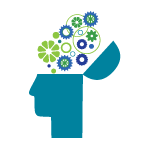
(View Complete Item Description)
Article Abstract: This survey-based research explores whether first-year college students who have had previous interactions with
library instruction, services, and resources at the high school level are better prepared to undertake information
literacy challenges and are better equipped to adapt to the rigors of academic research. In this collaborative
project, academic librarians across six colleges in New Jersey surveyed first-year students regarding their
research preparation and their experiences in high school and in their first year of college. Additionally, the team
surveyed a group of vetted, certified high school librarians in New Jersey regarding their resources and
instructional practices and followed members of their senior class to college Based on student survey responses
relating to their high school experiences, the team was able to identify, study, and compare three groups of first-
year students: novice researchers, non-novice researchers, and a subset of non-novices from the high schools with
vetted librarians. These were labeled alumni non-novices. The team found that students with prior high school
research experiences (non-novices), especially those followed from schools identified as having certified li-
brarians (alumni non-novices), felt more prepared for academic research and performed at a higher level relating
to their understanding and use of research tools and strategies. The results point to equity concerns and suggest
that students require differentiated attention at the college level.
Material Type:
Reference Material
Authors:
Brenda Boyer,
Cara Berg,
Ewa Dziedzic-Elliott,
Gihan Mohamad,
Heather Dalal,
Joan Dalrymple,
Joyce Kasman Valenza,
Leslin H. Charles,
Megan Dempsey,
Rebecca Bushby




















